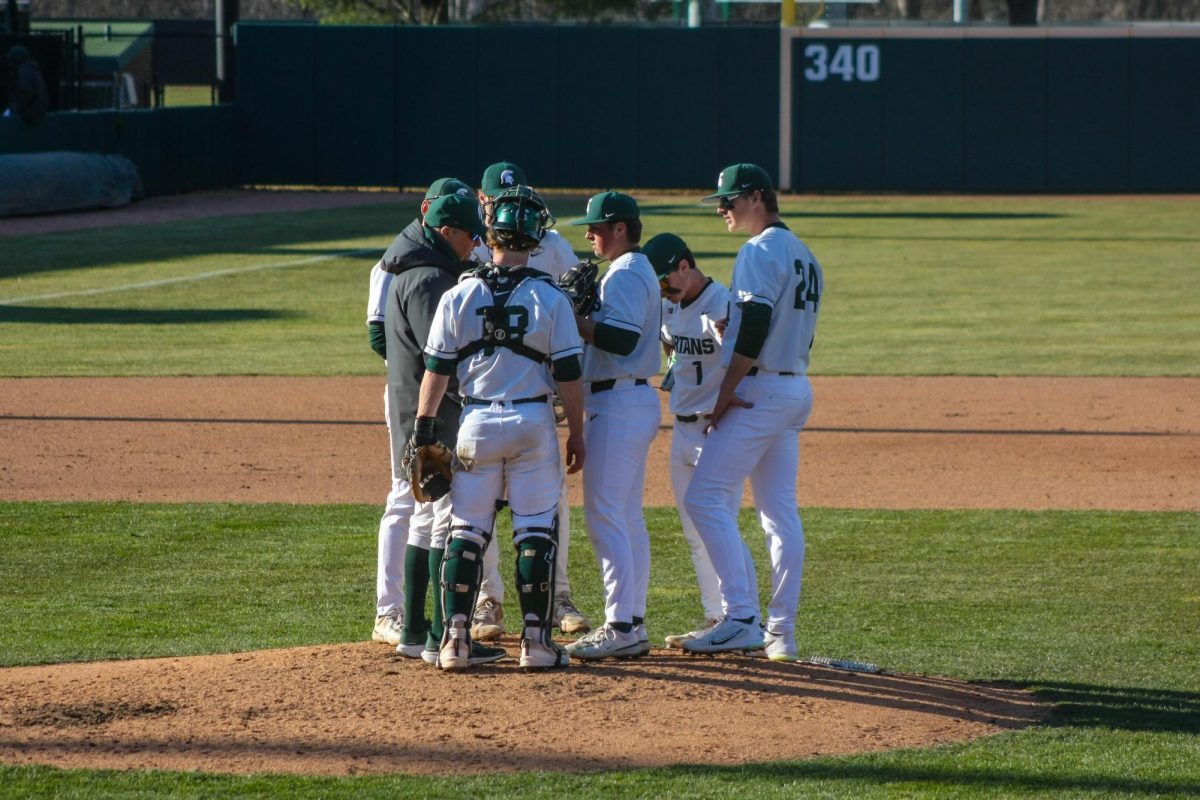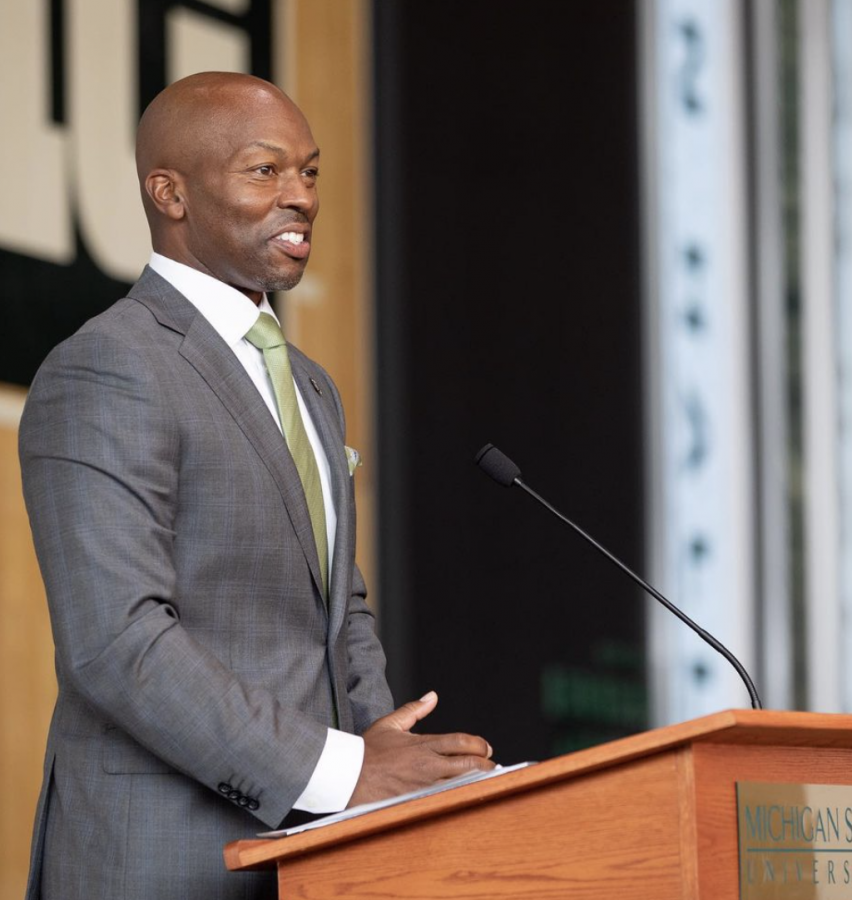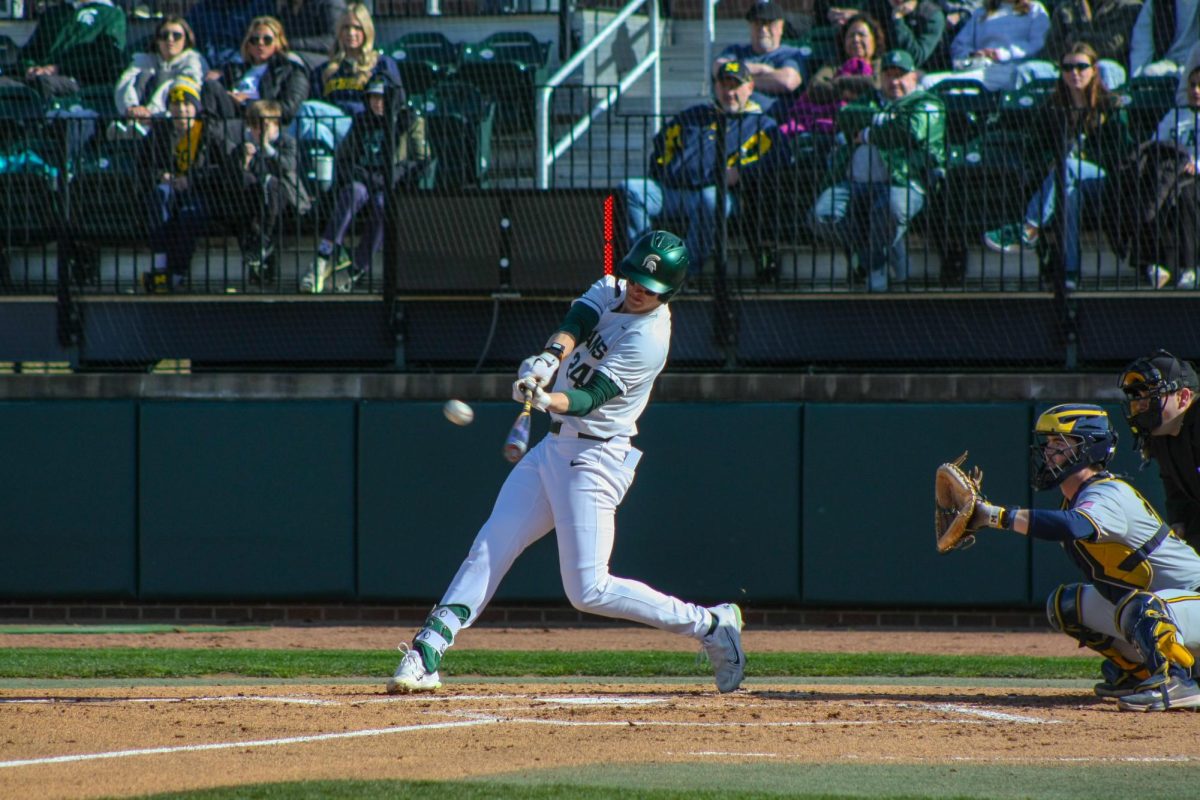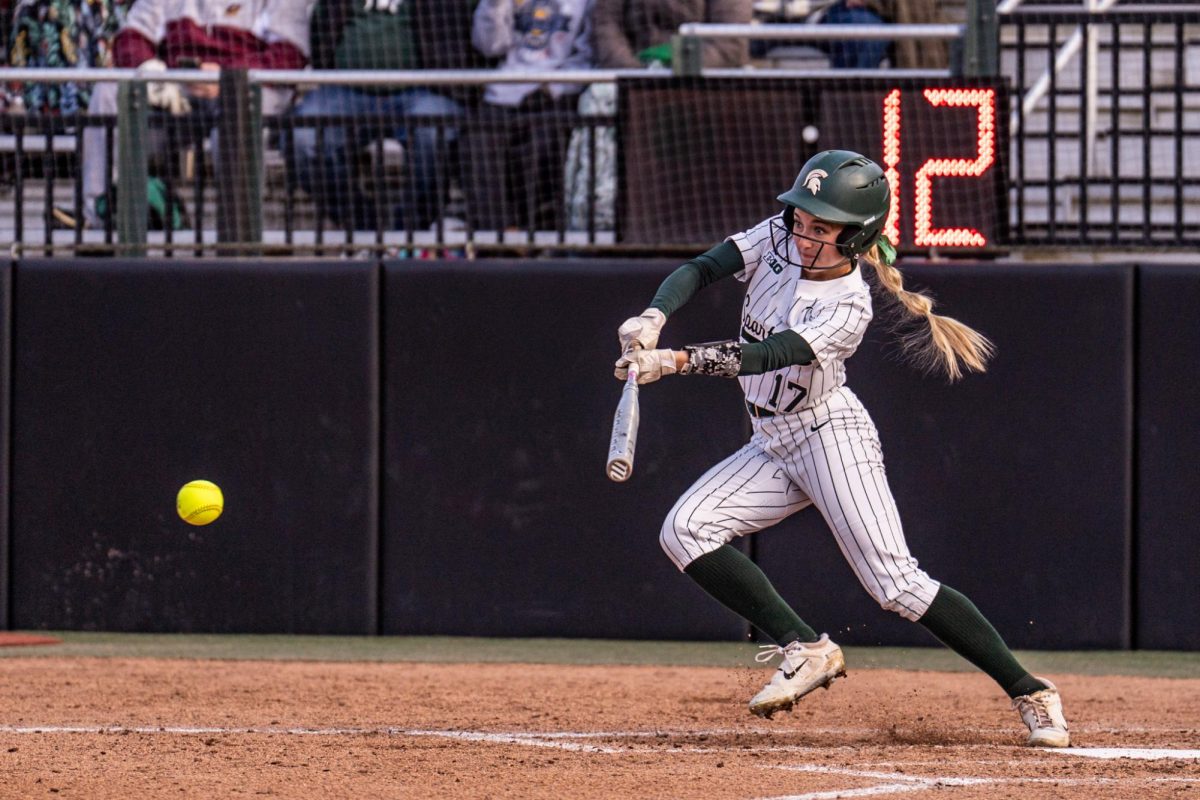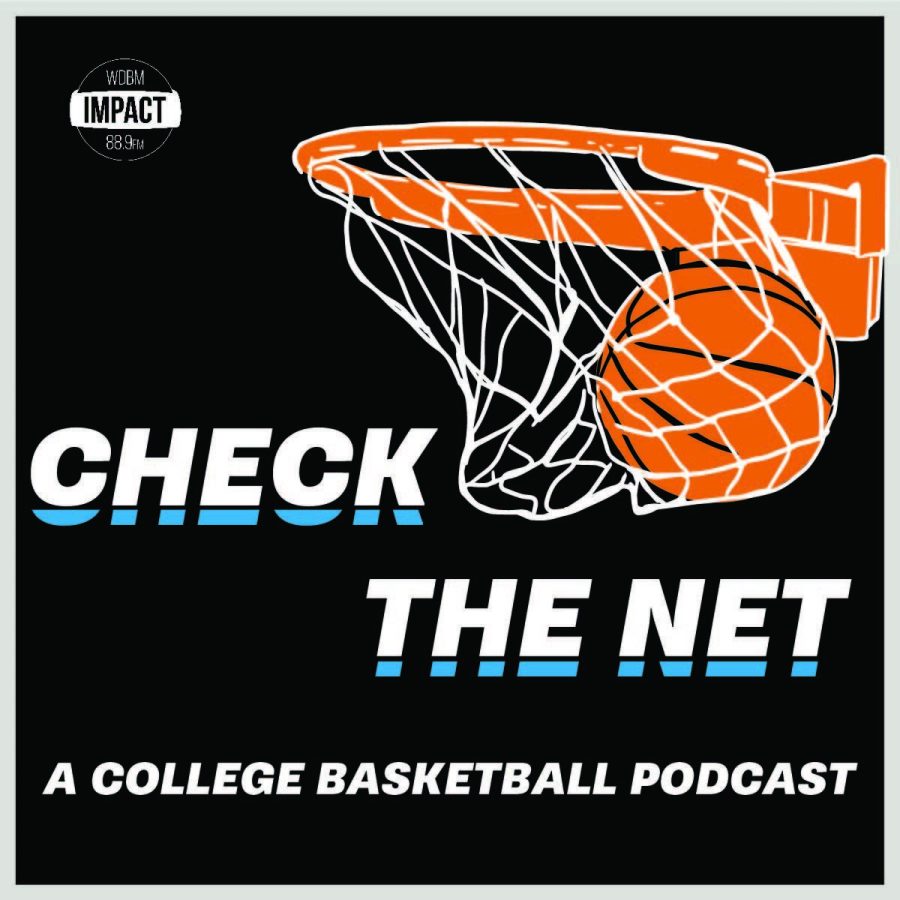When people think of the glory days of Michigan State hockey, they tend to think of the Ron Mason years of the 1980’s and 90’s, when MSU was a national powerhouse in the sport. However, lost in the pages of time is the fact that Michigan State hockey rose to national prominence several decades earlier.
By the time classes began in the fall of 1958, there was genuine optimism surrounding the Michigan State hockey team on campus and within the stands at Demonstration Hall. That year, the Spartans were coming off their most successful season since the team was reinstated 10 years earlier.
Head coach Amo Bessone, who took charge of the program back in 1951, had to claw tooth and nail for equipment, scholarships, even ice time for practice. Nearly everything was scarce for Bessone as he worked to get his team established, and the record showed it. Michigan State went a combined 41-93-3 from 1951-1957. But despite this lackluster record, Bessone’s players never showed any despair.

(Photo: MSU Archives)
“The thing was we felt we could play with those teams,” said Weldon Olson, who played for MSU from 1951-1955.
Olson was one of the first players to be recruited by Bessone.
“He did a lot of yelling from the bench,” Olson said of Bessone. “But he was a good, basic teacher of hockey.”
Bessone’s teaching started paying dividends in the ‘57-’58 season.
The Spartans earned their first winning season that year, finishing 12-11, and earned their first wins over the University of Minnesota. They also managed several big wins, including against the University of Michigan. In addition, MSU won the mythical Big Ten championship (there was no Big Ten conference or trophy at the time) as well as the Michigan Press Trophy, which was given to the best college hockey team in the state of Michigan.
With 16 letterwinners returning the following year, including senior goaltender Joe Selinger, Michigan State seemed poised to take another big step in the 1958-59 season.
Paul Hruby was a senior that year, having entered Michigan State as a freshman from Illinois in 1955. He was one of the many seniors that contributed to the Spartans’ success.
“A lot of the players who came in in ‘55 stayed. They were students and they chose to stay in school. They were not just guys who just came to play hockey, but stayed there as a team,” Hruby said. “So he [Bessone] had about a corps of 16 players that were there for three years.”
Even more valuable than the team’s experience was the chemistry shared among the players.
“Everybody was happy. You knew everybody [and] you all worked together, we worked at the ice rink, we worked in the dormitories together,” Hruby said.
The lynchpin of this chemistry was senior captain Elwood “Butch” Miller. His soft-spoken, friendly nature, but tenacious play style made him a well-respected leader on the team.
“Just looking at him, he exuded leadership. He was a good player; a tough player,” Hruby said of Miller.
Another player who held Miller in high regard was Melvin “Red” Christofferson, who was a junior during the 1959 season.

“Butch was a good hockey player, he was a good hitter and a real good defenseman,” Christofferson said.
As the season got underway, an unexpected turn of events shook the college hockey world. Denver University and Colorado College, the winners of the last two national championships, were deemed ineligible to participate in postseason play due to recruiting violations. Because Denver and Colorado College were regarded as two of the best teams in the west, their disqualification gave teams like Michigan State a solid chance to make the national tournament.
The Spartans started the season in early December, with a home series split with the University of North Dakota. But it was when the Spartans won two-straight East Coast tournaments that they started to gain momentum.
Michigan State went 3-0 in the Boston Invitational beating Northeastern University, Boston College and Boston University. As the new year dawned, the Spartans won another tournament, going 3-0 against Brown University, Princeton University and Rensselaer Polytechnic Institute. In an eight-day span, the Spartans won six games with no losses against some of the best teams in the east.
Ken Zacks, a student manager from 1958-61, remembered the two tournaments as the springboard for Michigan State’s historic season.
“Winning two out of three [tournaments] with some good East Coast teams made a big difference, and we just kept going from there,” Zacks said.
Indeed they did. Michigan State went 2-1-1 over the next four games against the Golden Gophers thanks to their hard-hitting and gritty play.
“We had some really rugged individuals. We took a lot of penalties but we seemed to get through that okay,” Christofferson said.
It was after the series with Minnesota that Michigan State embarked on one of the more unusual road trips of the season.
One cold night in late January, Bessone called Zacks into his office to tell him that the airplane to take the team to Houghton, Michigan wasn’t coming. The Spartans were scheduled to play Michigan Tech in a few days and were desperate to find alternative transportation. Zacks and the Spartans traveled via bus to a train station in Grand Rapids. From there, they traveled by rail to Chicago where they embarked on another train that traveled up through Wisconsin and into the Upper Peninsula. The team made it in time for its series against the Huskies, but a day behind schedule.

“We usually got there in time to practice on their home ice. We didn’t practice. We had to go out on the ice the next day and play the game, and we were tired,” Zacks said.
The Spartans ended up winning the first game against the Huskies before surrendering the second game in overtime.
Heading into February, Michigan State boasted a 10-3-1 record. The Spartans continued their impressive run, picking up a decisive sweep over Michigan for the second-straight year. Playing and beating the Wolverines was something the former Spartans looked back on with pride in their later years.
“Our arena was so full, and it was always a battle all the way. But we liked the guys. We talked to the Michigan guys off-ice and were friendly to them, but once on the ice with them we were mortal enemies,” Hruby said.
During these games, it was quite common for fights to erupt between the two teams. But during some games the fans themselves would take their frustrations out on the maize and blue or the spectator wearing green and white sitting next to them. Sometimes these brawls would carry over to the ice, as it did once during the 1959 season.
“The thing about Michigan was, you know, we were used to fighting on the ice. But when we played Michigan, we could stand on the ice and watch the fans fight. And one night they tore the screens right out, chairs all over the ice and us hockey players are out on the ice watching these other guys fight,” Christofferson recalled.
Things got so bad that representatives from the University of Michigan sent a letter to Michigan State faculty representative H.B. Tukey asking for his help in putting an end to hostilities between the two schools.

As the season progressed, the Spartans improved not only as a team, but also individually. But it wasn’t just Bessone and his staff doing the coaching, it was also the players pushing each other to improve.
“I never had a coach before coming to Michigan State,” Hruby said. “Luckily, a lot of the players helped me to get better. They would help me with skills. Before practice there was always 10 or 15 minutes where this guy [Richard] Dickey Hamilton would come and help me catch backhand passes and talk to me about how to play a little better. We helped each other. Hockey is such a team game that you can’t win unless you guys are a team.”
As a team, the Spartans finished the regular season with a historic 16-5-1 record. Thanks to their success, the Spartans earned a bid to the 1959 NCAA Tournament in Troy, New York. For the first time in history, Michigan State would be one of four teams playing for a national title. It was a tremendous honor for a program that was struggling to get off the ground just nine years before.
“It was fun. It was eye opening. But you know, I don’t think I really got the impact of it until later on,” Christofferson said.
The Spartans’ first challenge was defeating Boston College in the semifinals. The Eagles were regarded as one of the best teams in the east, and were hungry to avenge a 6-0 loss they suffered at the hands of Michigan State earlier in December.
“They were a tough team. They were the best in the east and we knew that. But by that time our guys were seasoned,” Zacks said.
After a tight first period, both teams were tied 1-1 entering the second. Then the Spartans rattled off three-straight goals to take a commanding 4-1 lead. Boston College would score two more goals in the third to make it interesting, but Selinger and the Spartans prevailed. They defeated Boston College by a score of 4-3 and advanced to the championship game against the University of North Dakota.
The deciding game was played on March 14, 1959, a Saturday afternoon in the RPI Field House. Michigan State athletic director Clarence “Biggie” Munn had been a supporter of Spartan hockey since its reinstatement in 1950. Every home game, Munn could be found sitting in the front row watching the trials and tribulations of the hockey team over the years. While he was constrained in giving hockey the support and resources it needed, Munn was always a friend to hockey. Now, leading up to one of the biggest games in the program’s history, he penned a short note to his friend and hockey coach, Bessone, about the upcoming clash with North Dakota. The note was sent Friday, and arrived on Saturday.
The letter read: “You did it once & you can do it again. The very best of luck.”

The Spartans and Fighting Sioux had previously each won two games against each other during the regular season. Now, a single game would determine who would win the national championship.
The Spartans opened the scoring first and took a 1-0 lead into the locker room after the first period. Midway through the second however, UND scored three-straight goals all within the span of three minutes. The sudden offensive surge put the Fighting Sioux up 3-1. Michigan State could not respond, and found itself down by two goals going into the third period.
As they have done so many times before, the Spartans fought back. Goals by Andre LaCoste and Doug Roberts tied the game at three.
With time ticking down, LaCoste had a chance to give MSU the lead. LaCoste had the puck close to his stick with a wide-open net to shoot at. Just before he made contact with the puck, a North Dakota defenseman knocked LaCoste’s stick out of his hands. There was no penalty called and the Spartans had missed out on their best chance to end the game in regulation.
With both teams tied 3-3, the national championship would be decided in sudden-death overtime. Just a few minutes after the extra session had begun, senior forward Bill MacKenzie had a breakaway.
“Big Billy MacKenzie got a breakaway and Amo [Bessone] said a couple times [afterward] there was nobody else that he wanted to have that breakaway more than Billy. And he went down the ice, pulled the goalie and shot the puck over the net,” Christofferson said.
Shortly after MacKenzie’s golden opportunity, North Dakota capitalized on a long shot that was mishandled by Selinger. Fighting Sioux forward Reg Morelli tapped home the rebound to give UND the win and the national championship.
“Our guys tried so hard,“ Zacks said. “He [LaCoste] told me 10 years ago he never forgot that and had nightmares for almost 50 years.”
While the Spartans might not have won the national championship that season, they had laid a strong foundation in East Lansing. Hockey could indeed succeed at Michigan State, and six years later, Bessone would claim the national championship that had eluded him. The 1959 team planted the roots of Spartan hockey, which continue on today.
Even though their playing days are far behind them, the surviving members of the 1958-59 Spartan hockey team are proud of their accomplishments and their head coach.
“Coach Bessone was just such a nice guy that you wanted to do everything you could for him,” Christofferson said. “It’s an experience [playing for Bessone] that you will never experience again. It was, he was all for the kids.”
Hruby summed up his feelings for Bessone, and his teammates in a different way.
“Michigan State is a place of great people,” Hruby said.




